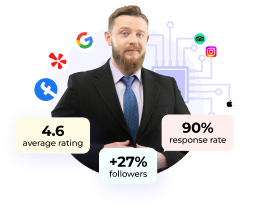The Difference Between Earned, Owned & Paid Media
In a rapidly changing marketing and digital space, social media, and online PR continue to grow in importance. Media investments are evolving to reach multi-channel audiences.
As a result, it’s more important than ever for brands and businesses to distinguish between Paid, Earned, and Owned media channels. As well as understanding the individual roles they can play as part of a comprehensive marketing mix. The industry and the target audience determine the importance of each.
What are earned, paid & owned media channels?
In content marketing, there is a division into three groups of resources for publishing content:
- Paid Media — platforms where you have to pay to publish content.
- Earned Media — a channel where your content is distributed, discussed, and even generated by users.
- Owned Media — the company’s own media resources, created and fully controlled for brand purposes.
What is earned media?
The complexity of the actions of users and media in relation to the brand: discussions on Internet sites, likes, and comments. These are ads generated by the brand’s audience:
- Online reviews
- Content Schering
- Word-of-mouth marketing
Earned Media audiences are the users targeted by the ad campaign and those already engaged through paid and organic online channels. This also includes brand fans, their friends, and their subscribers.
The earned media channels create a recognizable, honest, and authentic brand image. This is the result of well-planned and executed Paid Media and Owned Media activities.
There are several rules to follow to gain the trust of opinion leaders and use them to spread the word about your brand.
First, build your own base of opinion leaders who are loyal to your brand, and constantly engage with them and show interest in the content they produce.
Secondly, as a rule, journalists are not interested in popularizing your brand or products. They, first of all, want to be interesting for their readers. So “sell” them not your brand, but an unusual story that can interest them.
Third, offer exclusive content. Publishers want to own information that their competitors don’t. So by offering exclusives, you increase your chances that they’ll use your content in their story.
Tip: Make it a habit of interacting with 10-20 opinion leaders weekly and systematically analyze the content they publish. This will allow you to maintain a relationship with them and understand their current preferences.
What is paid media?
It’s communication with the user that you purposefully paid for. The channel extends the reach of the advertising campaign and increases brand awareness through media advertising, advertising through bloggers, or other tools:
- Video ads
- Display advertising
- Native advertising
- Special projects, promotions
Paid Media audiences are internet users who have not heard of the company before but are potentially interested in the product.
Paid Media channels are suitable for big internet campaigns aimed at increasing brand awareness and conversion. The main advantage is the ability to measure the return on investment and effort. These are catalysts that react with company resources and lead to the formation of Earned Media.
The choice of paid content distribution channels is extensive. These include, for example, paid social media promotion tools, paid content placement on popular sites and platforms, publications in major media resources, or even paid tweets and posts. Most importantly, among the plethora of offers from paid platforms, choose the most appropriate ones for your target audience and affordable for your content marketing campaign budget. Choose thematic platforms that are most closely related to your brand, products, and services. If your budget allows, it’s also worth using paid publications in reputable publications such as Forbes, Business Insider, and others.
It is worth noting that there is no optimal strategy for using these channels. It all depends on what kind of content a company creates, who it targets and what it sells. While large brands use paid channels en masse, small companies cannot afford it due to budget constraints but skillfully compensate for the lack of expensive tools using earned media.
What is owned media?
This is when you use a channel that you create and control yourself. Possible platforms for posting content about the brand:
- Product website
- Social media pages
- Company blog
- YouTube channel
The audience of Owned Media is regular, new, and potential clients. The conversion of users into customers through paid media depends on the quality and relevance of the company’s content.
The main task of the Owned Media channels is building a long-term and trusting relationship with the target audience. They can also be used as a launching platform for advertising activities.
The timing of posts is important when working with social media. Keep track of the times when users are most active and try to post in advance, providing the necessary information at a time that is convenient for them.
Tip: Accompany your content with social media icons. Like “call to action” icons, they will help speed up the distribution of the content and increase the users’ engagement with it. But don’t overdo it; only use icons for social media platforms that are relevant to your audience.
Each of these media channels involves time and labor, but their use has a positive impact on business. We recommend using paid, earned and own media channels as part of a single integrated digital marketing strategy. This approach has a synergistic effect and comprehensively solves the client’s media objectives.


